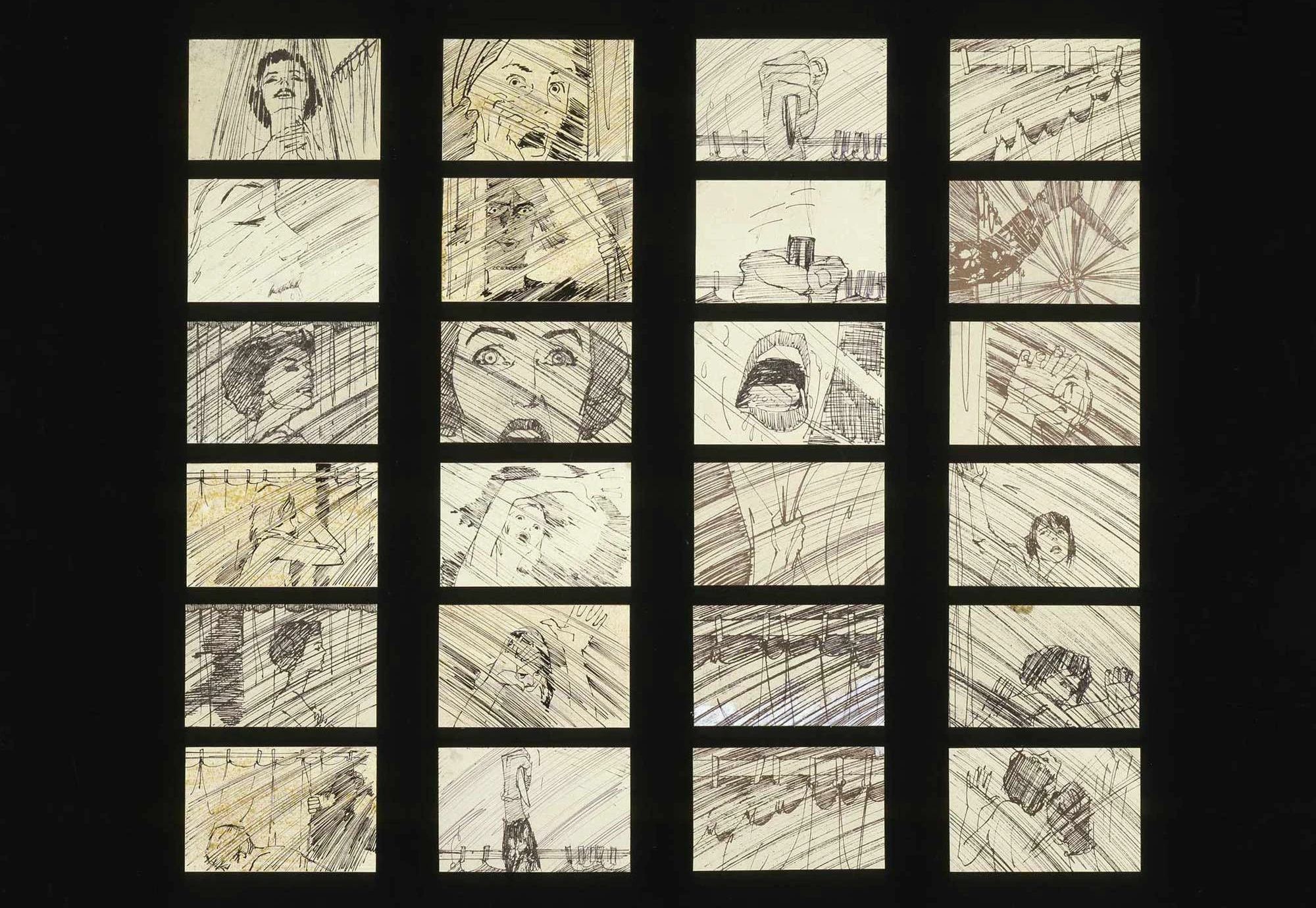
Saul Bass Papers, Margaret Herrick Library, Academy of Motion Picture Arts and Science
About the Exhibition
Screenplays and storyboards show how cinema is first born on paper. The screenplay, or script, guides the work of the cast and crew on a movie set. Whether an original idea or based on an existing story, it provides not just dialogue but also settings, characters, action, themes, and other elements on which the narrative turns. A screenplay can have a profound effect on the budget: a single line in a script can require thousands of dollars in production to execute.
The storyboard offers a visualization of the script as seen through a camera’s lens. As a sequence of images, a storyboard outlines the frames, movements, shot progressions, and aesthetic vision of a movie and helps to ensure that the filmmakers achieve the desired storytelling goal. Often compared to comic strips, storyboarding is considered to have originated at Disney Studios in the 1930s and has since become an integral aspect of envisioning a film.
No matter the storytelling approach or genre, these essential working materials are the foundation of filmmaking. In Story, visitors see how the words and illustrations that filled once-blank pages have driven the creation of some of cinema’s most memorable moments. Screenplays and storyboards from a wide range of films—from Stella Dallas (USA, 1925) to Rebecca (USA, 1940) to Queen & Slim (USA, 2019)—are presented next to practical tools such as the typewriter Joseph Stefano used to write the screenplay for Psycho (USA, 1960) and a 1980s computer used by screenwriter Scott Alexander (Problem Child (USA, 1990), Ed Wood (USA, 1992).
This gallery is curated by former Senior Curator for Collections and Curatorial Affairs Nathalie Morris.
Supported By
Dolby is the exclusive audio sponsor of this gallery.
Stories of Cinema is presented by PwC. Major funding is provided by Gerald Schwartz and Heather Reisman. Generous support is provided by Metro-Goldwyn-Mayer Studios, Ruderman Family Foundation, FotoKem, Barbara Roisman Cooper and Martin M. Cooper, Jocelyn R. Katz, John Ptak and Margaret Black, Lauren Shuler Donner, Randy E. Haberkamp, Kevin McCormick and A. Scott Berg, CHANEL, and John and Lacey Williams. Technology solutions generously provided by Panasonic and Sony Electronics Inc. Powered by Dolby. Academy Museum digital engagement platform sponsored by Bloomberg Philanthropies.